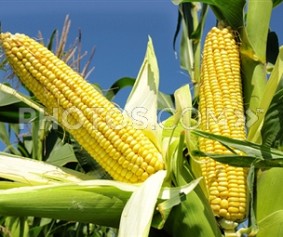Drought – Food Prices Headed Higher, Maybe a Lot
Thursday, August 29th, 2013 @ 6:34PM
Between the Lines
by Gary D. Halbert
Editor’s Note: Today’s GDP report for the 2Q came in better than expected at +2.5%, thanks largely to some trade data that was not available last month when the GDP estimate was only +1.7%. I’ll have more analysis on the GDP report in the E-Letter on Tuesday. Let’s get on to our topic today.
Most of my readers are not aware that my first job out of graduate school in late 1975 was as a grain merchandiser for Continental Grain Company, one of the largest agribusiness firms in the world. My job was to buy and sell grain (corn, soybeans, wheat, etc.) all across my territory which included Texas, Oklahoma, Arkansas, Louisiana and New Mexico.
In that capacity, and for years later as a hedging broker for Conti, I had to become somewhat of an expert at forecasting grain and other commodity prices for my clients. It’s been a long time since I was in the direct commodity business, but I still keep an eye on prices and what’s driving them. This year, I see an interesting development that could hit every man, woman and child later this year: higher food prices!
Most people know that the Midwest and the Great Plains are some of the most productive crop regions in the world for corn, soybeans and wheat. The ongoing drought across much of the US has sent grain prices through the roof in recent years. Soaring grain prices over that period sent food prices to new record highs as well.
There’s an old saying in the commodities world: “The cure for high prices is high prices.” That probably makes no sense, but let me explain. When commodity prices soar, that almost always guarantees that production/supply will go higher the following year. In the case of “food” commodities, that means farmers will respond to the high prices by planting more acres the next year, with the potential to increase supply significantly. The increased supply usually drives prices back down.
That is exactly what happened this year. Planted acreage of corn and soybeans, for example, soared to record levels. As a result, experts predicted back in the spring that grain production could hit new record highs this fall. Not surprisingly, grain prices have been under pressure all summer. However, an interesting twist is starting to unfold.
Sticking with corn and soybeans, while planted acres hit new highs earlier this year, the Midwest was hit by an unusually wet planting season. This caused planting in many areas to be delayed and in some cases, planting in soil that was subsequently too wet. On August 15, the USDA reported that 3.41 million acres of corn and 1.6 million acres of soybeans either didn’t get planted or the crops didn’t come up.
Recent aerial photos show many areas in the Midwest where the crops never came up in the middle of fields. Simply driving the country roads often doesn’t always reveal this. To see how bad it is in some areas, click on the link below and scroll down to the aerial video:
http://www.agweb.com/article/just_how_bad_is_it_an_aerial_view_of_crops_in_iowa_and_minnesota/
Making matters even worse, following the wet planting season, a high pressure dome settled in on the Midwest, and much of the corn/soybean belt is now in a drought. As a result, the remaining crops in many areas are not only late in development but are also badly in need of rain.
In another recent development, early frost hit Brazil’s top wheat producing state of Parana in late July, and Brazil’s Agriculture Ministry estimates that its wheat crop declined by 26.7%. What does this mean for US wheat prices? Brazil is a big importer of US wheat.

 The point is, the prices of US corn, soybeans and wheat have already started to rise, especially corn and beans. Soybean prices spiked from below $12 a bushel to above $14 in just the last few weeks. Corn has risen from $4.50 to $5.00 during the same time. And this could be just the beginning.
The point is, the prices of US corn, soybeans and wheat have already started to rise, especially corn and beans. Soybean prices spiked from below $12 a bushel to above $14 in just the last few weeks. Corn has risen from $4.50 to $5.00 during the same time. And this could be just the beginning.
If they don’t get rain soon in many areas of the Midwest, crop production could be reduced significantly. Even if timely rains do come, there is always the threat of an early frost, which is especially bad for crops that were planted late.
Keep in mind that rising grain prices affect just about everything we eat. Have you checked meat prices lately? Cattle, poultry and farm-raised fish are all fattened on grain, soybean meal, etc.
The bottom line is that food prices could soar in the months ahead unless Mother Nature deals US farmers a very good hand in the weeks just ahead.
Posted by AIA Research & Editorial Staff
Categories: Between the Lines


